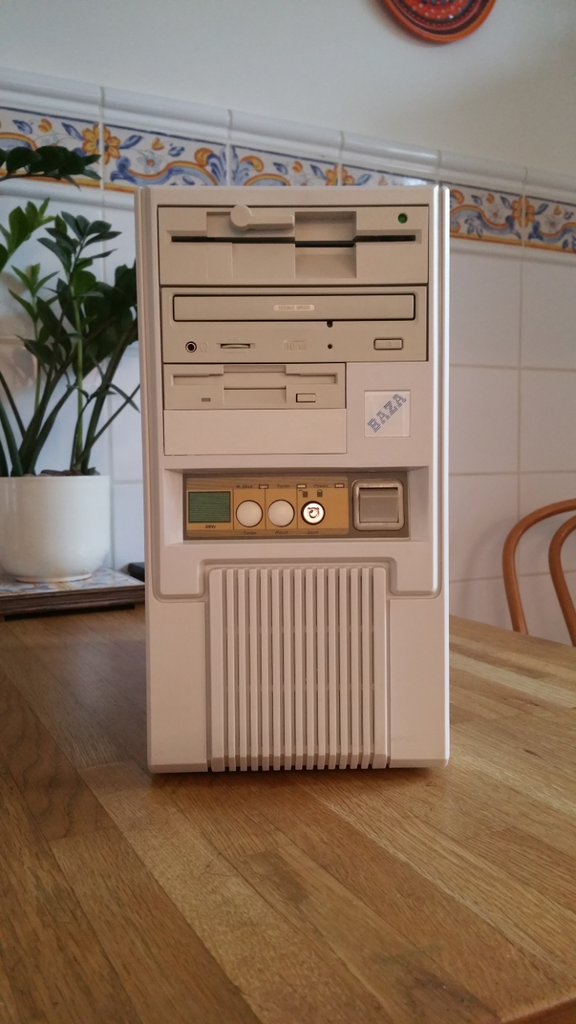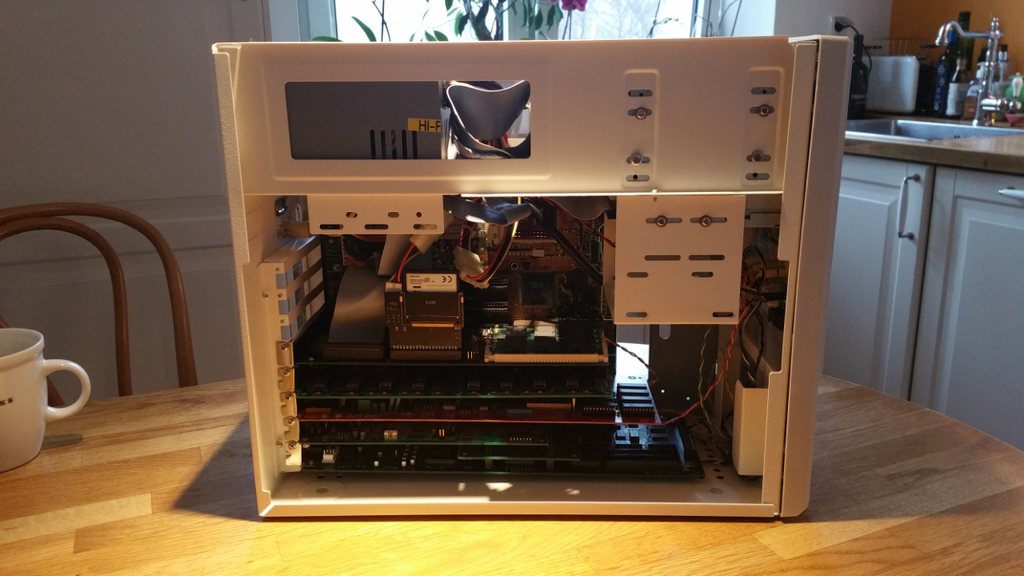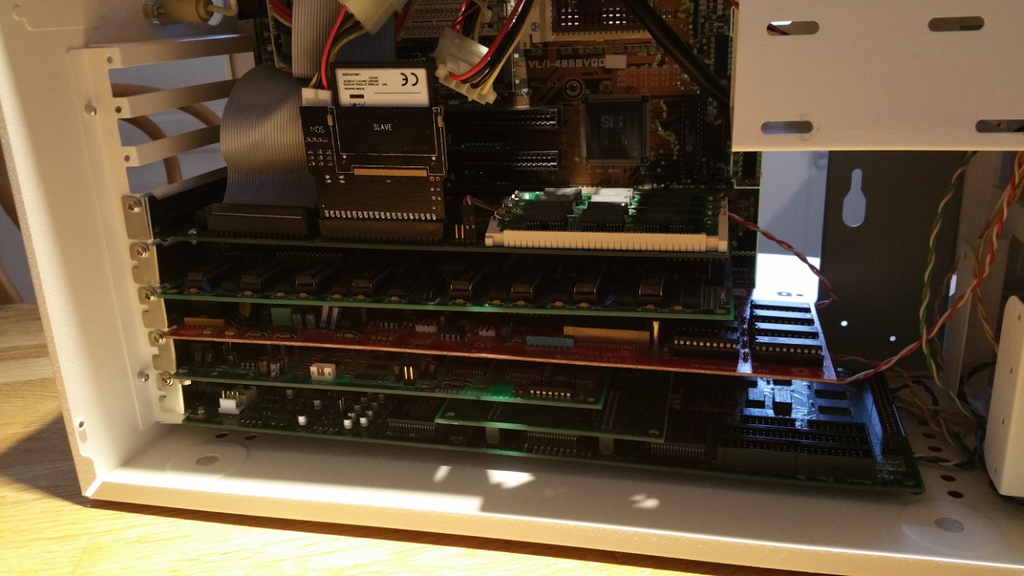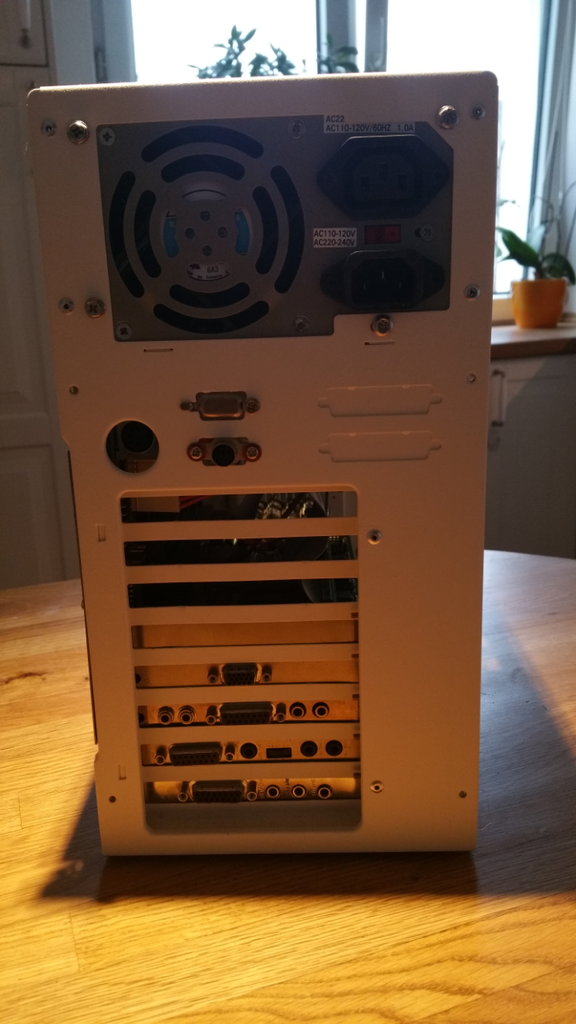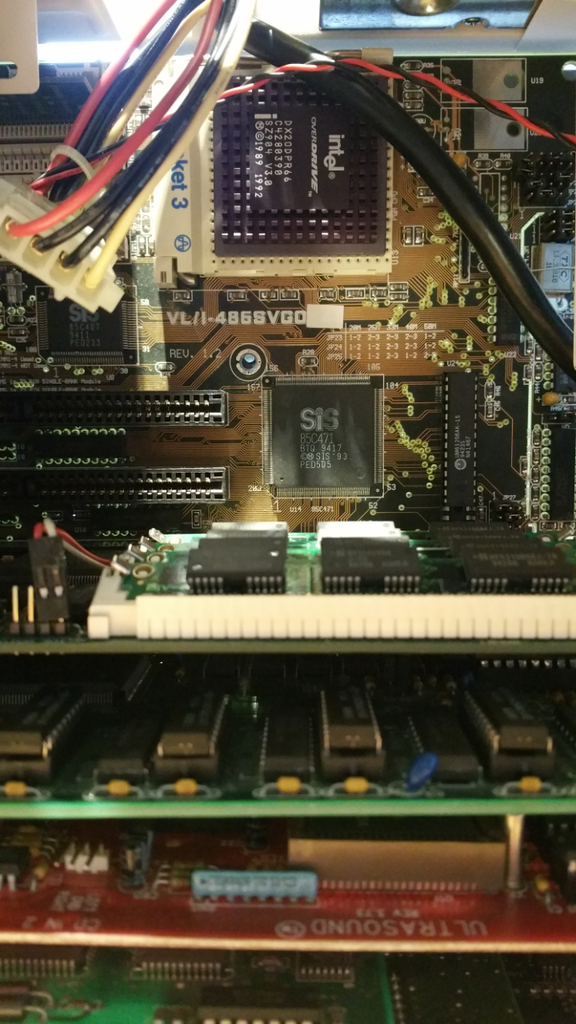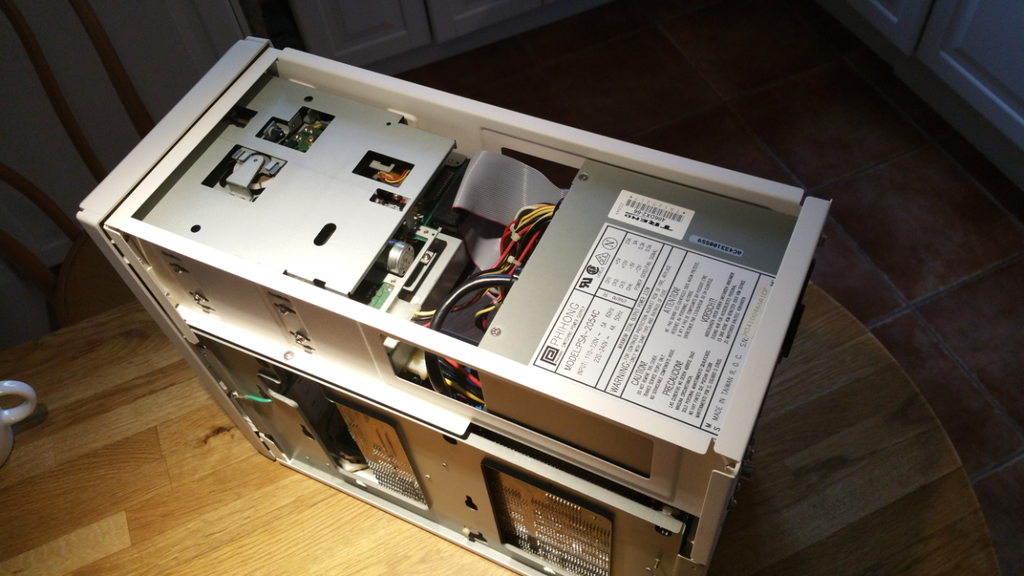First post, by tikoellner
- Rank
- Member
Hey there!
After some struggle with both getting and putting together all the parts I finally finished my classic 486 build. By classic I mean the machine that could be sold around 1993-1994, with some slight exceptions. After giving it a thought, I did not want to make the fastest machine possible, as the concept of "fast" 4x86 and 5x86 being just wanna-be Pentiums really got into my mind.
The specs are as follows:
- Case: generic mini tower. I got one in a very good shape. The panel is free of any imperfections. Due to some rust inside, I decided to get the case powder-coated. I dissassembled everything and got it some nicele structured RAL-9001 paintwork. In my opinion the effect is really good.
- Motherboard: ASUS VL/I-486SVGO (an early edition of SV2GO, which I had but failed to get running). Based on SIS chipset, with 2 VLB slots and PS/2 connector.
- CPU: i486DX2 66 ODPR. It was already in the board as I bought it. I love the purple looks of this CPU. And it supports writeback cache.
- Memory: 16mb FPU (2x8mb)
- Cache: 256kb (the board is expandable to 1024kb, but did not find the proper modules)
- Video: VLB Cardex TSENG-ET4000/W32i with 2mb DRAM
- IDE controller: Longshine LCS-6941 VLB caching controller with 4mb cache (4x1mb modules). I flashed the BIOS with the newest firmwere and now it supports LBA flawslessly! First I had some trouble getting FDD working. It was simply a foulty 1.44 drive.
-Soundcards: Ensoniq Soundscape II Elite (with DSP module) - form MIDI and MT32 emulation, Sound Blaster CT-1600 for OPL3 and Gravis Ultrasound Classic 3.73 for the games that support it and some demos.
- CD-ROM: Mitsumi 2x. Propietary inteface hooked up to Ensoniq card.
- 1.2 and 1.44 floppy drives
- CF-IDE adapter with 2gb CF card (some Sandisk)
- Also replaced the crappy PSU with some better quality one.
Some photos:
Any suggestions or questions welcome!
